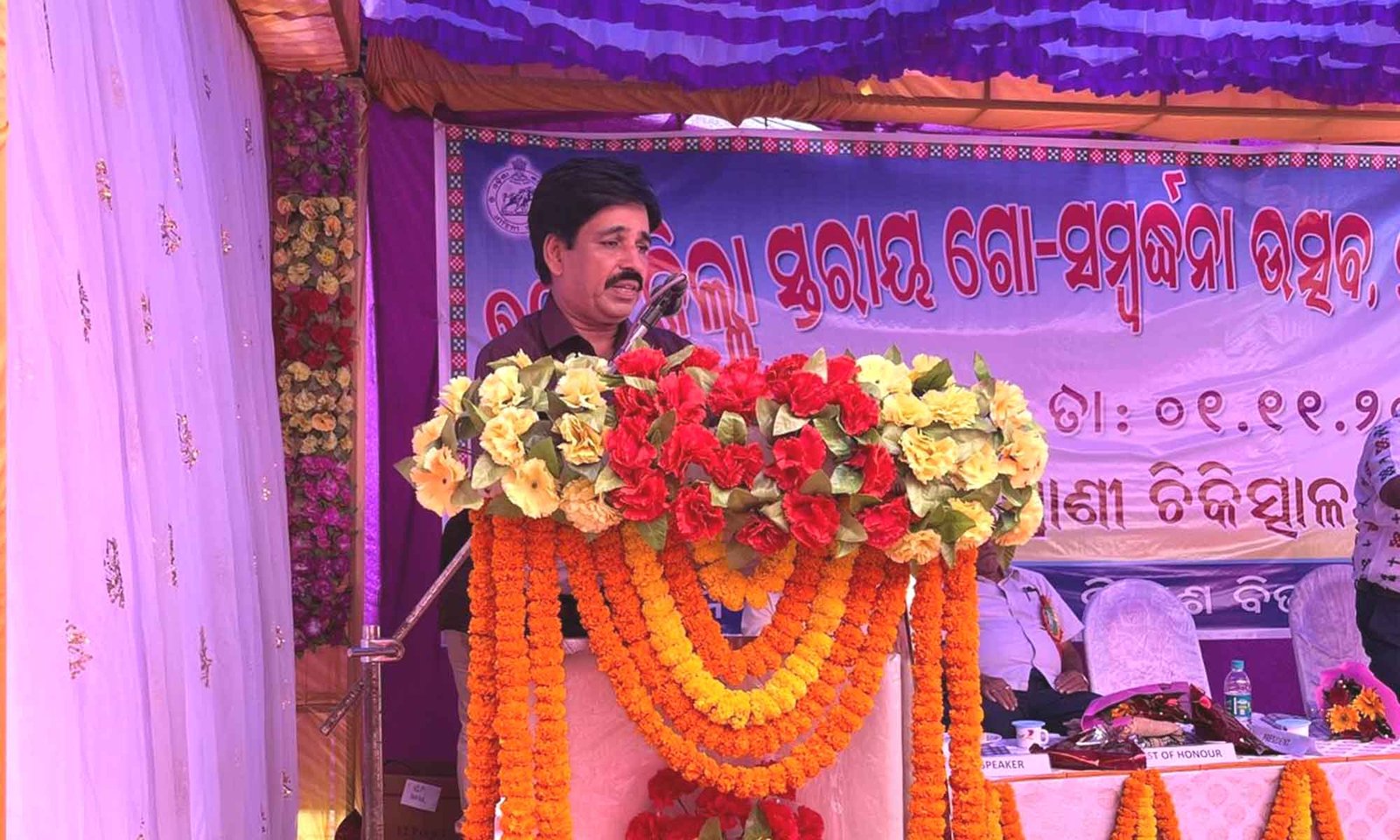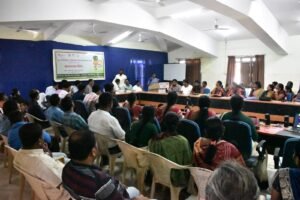Added two new pages to website https://odishavet.com
1- How to look after farm animals?
2- Winter care of sheep and goats

livestock farming Blog
Added two new pages to website https://odishavet.com
1- How to look after farm animals?
2- Winter care of sheep and goats
Welcome to our guide on sustainable housing solutions for Indian goats! In rural communities across India, goats play a vital role in people’s livelihoods, contributing to agriculture and the economy. It is crucial to provide appropriate housing for goats to ensure their well-being, health, and productivity. In this article, we will explore different aspects of goat housing and how to tailor it to the unique needs of Indian goats.
One of the key reasons why proper housing is important for goats is that it offers protection from harsh weather conditions, predators, and diseases. Well-designed shelters also contribute to the overall health and productivity of goats, resulting in better reproduction rates and higher milk and meat yields.
When it comes to goat housing in India, there are several key considerations to keep in mind. Firstly, climate-adaptive design is essential. Adequate ventilation is crucial to prevent the buildup of moisture and harmful gases, so make sure to have proper cross-ventilation in the goat shelter to maintain a comfortable and healthy environment. In hot climates, it is important to incorporate cooling measures such as shade nets or elevated platforms to protect goats from extreme temperatures.
Space requirements are also important to consider. Each goat should have enough space to move freely and lie down comfortably. Overcrowding can lead to stress, disease, and reduced productivity. If possible, it is recommended to have separate spaces for kids, lactating does, and adult males to cater to their specific needs.
Feeding and watering facilities are another crucial aspect of goat housing. Design feeding troughs at an appropriate height to minimize wastage and keep the feed clean. Additionally, ensure a clean and accessible water source to meet the hydration needs of the goats. Regularly clean and refill water containers to maintain their cleanliness.
Predator protection is vital to keep goats safe. Install secure fencing around the housing area to protect them from predators. It is important to use sturdy and durable materials that can withstand external threats.
Lastly, maintaining hygiene within the shelter is essential for disease prevention. Regularly clean the shelter to minimize the risk of diseases spreading among the goats.
By considering these key factors, you can provide sustainable housing solutions for Indian goats, ensuring better livelihoods for both the goats and the rural communities that depend on them.

Livestock farming is constantly evolving, with a growing need for sustainable and cost-effective solutions. In this pursuit, an aquatic fern called Azolla has emerged as a game-changer,Known as “green gold,” . Azolla is gaining recognition for its ability to improve livestock nutrition, reduce feed costs, and promote sustainable farming practices.In this article we shall discuss about the advantages of Azolla cultivation in livestock farming and its potential to reshape the future of animal husbandry.
Azolla, a small floating fern that thrives in aquatic environments, offers immense nutritional benefits for livestock. Packed with proteins, essential amino acids, vitamins, and minerals, Azolla can significantly enhance the diets of cow, poultry, pigs, and fish. By incorporating Azolla into their feed, livestock can experience healthier growth and improved reproductive performance.
Azolla cultivation stands out for its cost-effectiveness as a feed supplement. It can be easily grown in small water bodies, providing an accessible and affordable source of high-quality feed for livestock. By reducing reliance on expensive commercial feeds, farmers can lower operational costs and enhance the overall economic viability of livestock farming.
One of Azolla’s unique abilities is its capacity to fix atmospheric nitrogen, converting it into a usable form for plants. When integrated into livestock farming systems, Azolla contributes to soil fertility, establishing a symbiotic relationship with other crops. This not only enriches the nutrient content of the soil but also reduces the need for synthetic fertilizers, promoting sustainable and eco-friendly agricultural practices.
With its remarkable potential, Azolla cultivation has the power to revolutionize livestock farming. By providing a nutrient-rich superfood, offering a cost-effective feed supplement, and boosting soil fertility through nitrogen fixation, Azolla is paving the way for a more sustainable and efficient approach to animal husbandry. Embracing Azolla cultivation can lead to improved livestock health, reduced environmental impact, and enhanced economic outcomes for farmers.
Farmer can harvest the surplus Azolla and sell it to nearby farms or agricultural markets. This opens up a niche market for entrepreneurs who want to produce Azolla on a larger scale. The versatility of Azolla makes it an appealing choice for those who want to diversify their agricultural ventures.
In conclusion, Azolla cultivation has the potential to revolutionize livestock farming by providing a sustainable, nutritious, and cost-effective feed supplement. This “green gold” not only meets the nutritional needs of livestock but also contributes to soil fertility, water conservation, and environmental sustainability. As more farmers and entrepreneurs realize the potential of Azolla, its cultivation could become a fundamental aspect of a resilient and sustainable future in animal husbandry.
Two new pages were added to website https://odishavet.com
All pages of website will be updated very soon.
I have recently updated project reports of 10000,14,000 EC broiler farm and 3000 open broiler farm in website https://odishavet.com. Other project report & new schemes will be updated soon in the above mentioned website.
https://odishavet.com/ec-broiler-farm-project-report-15000/
https://odishavet.com/ec-broiler-farm-project-10000/
Artificial Intelligence (AI) has the potential to revolutionize the milk industry in various ways, from the initial production stages to the final quality control.
Let’s discus some of the areas where AI can make a significant impact:
AI can be utilized in precision farming to optimize the management of dairy herds. By using sensors and cameras, AI algorithms can monitor the health and behavior of cows. This enables farmers to detect signs of illness, estrus, and overall well-being, allowing for timely intervention.
AI-powered robotic milking systems can automate the milking process. These systems use sensors to identify each cow, analyze milk quality, and ensure proper milking techniques. This not only increases efficiency but also contributes to the overall health of the herd.
AI can analyze historical data related to milk production, weather conditions, and other relevant factors. By employing predictive analytics, AI can help forecast milk production, optimize feeding schedules, and manage resources more efficiently.
AI can optimize the supply chain by predicting demand, managing inventory, and scheduling transportation. This ensures that milk reaches processing facilities and consumers in a timely and cost-effective manner.
AI-based image recognition systems can be employed for quality control in milk processing plants. These systems can detect abnormalities or contaminants in milk, ensuring that only high-quality products reach the market.
AI has the potential to revolutionize the milk industry by optimizing various aspects of production, processing, and quality control. By harnessing the power of AI, the milk industry can achieve greater efficiency, improved product quality.
Attended regional stakeholders consultation workshop organized at NALCO Auditorium Angul on 19th December 2022. The workshop was meant for formulation of five years vision plan for Odisha agriculture & allied sector. development. Actively participated in the programme & gave my suggestion for development of agriculture & allied sector. Officers of agriculture & allied sector from 10 districts of Odisha participated in the programme.
Awareness cum sensitization programme on Micro, Small & Medium Enterprises (MSME) was organized at Government polytechnic college Subarnapur. I attended the programme as a resource person & delivered my speech on” opportunities on livestock sector for self employment”. About 100 student from government polytechnic Subarnapur were present in the programme. The programme was organized by General Manager DIC Subarnapur.

Awareness programme on Pradhan Mantri Formalisation of Micro Food Processing Enterprises Scheme (PMFME) was organized at KVK Subarnapur by GM DIC Subarnapur. The Programme was inaugurated by Additional District Magistrate, Subarnapur. Attended the awareness programme as a guest.Delivered one talk on facility under PMFME in food processing. Credit linked subsidy @35% is available for food processing unit under scheme Pradhan Mantri Formalisation of Micro Food Processing Enterprises Scheme (PMFME). Rupees fifty thousand is available to farmers for preparation of project report.Farmers of India will definitely be benefited from PMFME scheme.

General Manager District Industrial Center Subarnapur had organised a 15-day entrepreneurship development program. I joined the programme as a resource person and imparted training to the budding entrepreneurs of the district. The animal husbandry sector has enormous potential for self-employment generation. Subarnapur is notable for its surplus egg and meat production. The poultry industry is growing rapidly in Subarnapur district. Egg production in Subarnapur district is more than double of the national average and more than three times the state average. Discussed with trainees about opportunities in the animal farming sector and also about various subsidy schemes of the government. Some budding entrepreneurs expressed their interest in EC broiler farming. Several EC broiler farms have been established in this district during the past year. Because of its high profit margins and low labour requirements, EC poultry farming is gaining popularity.